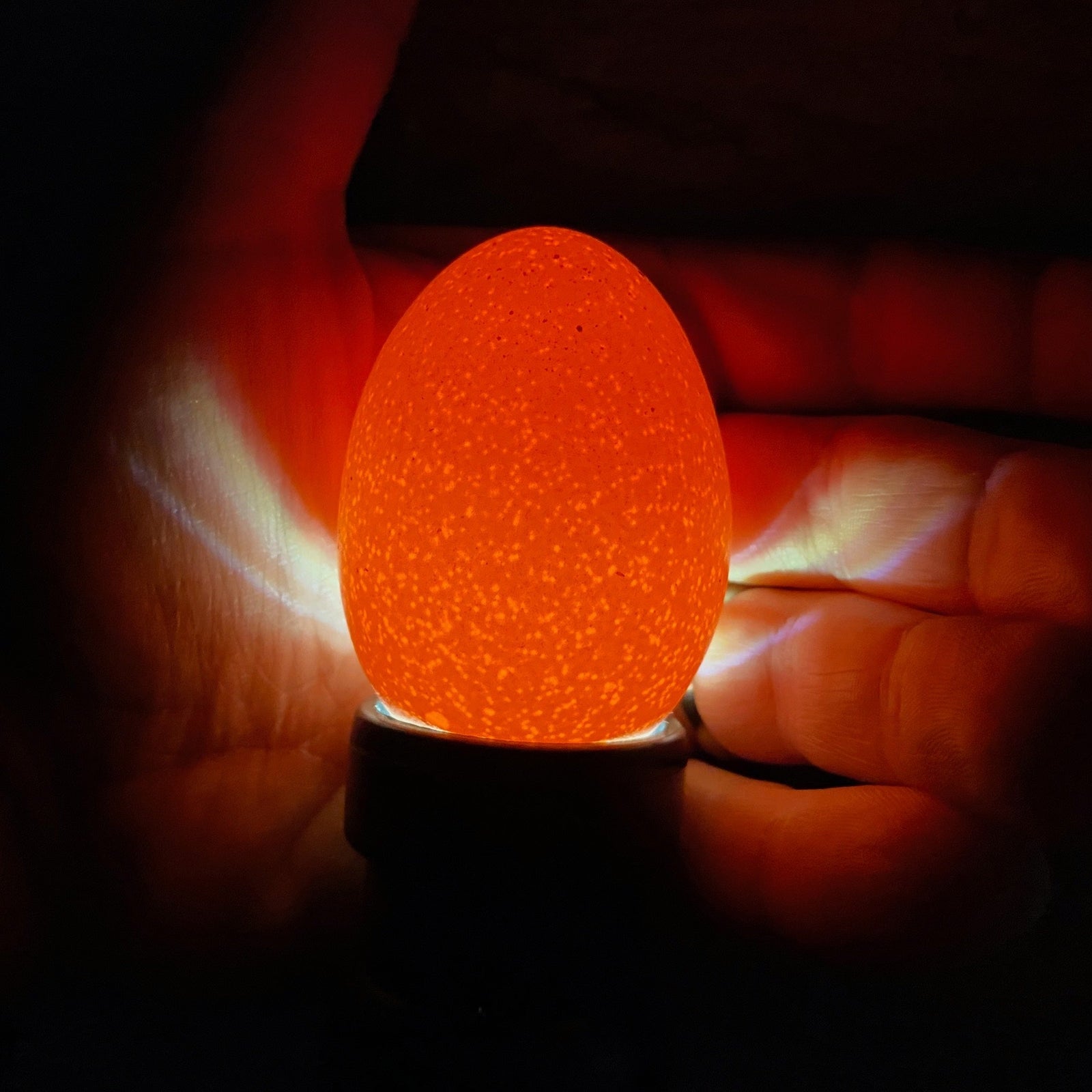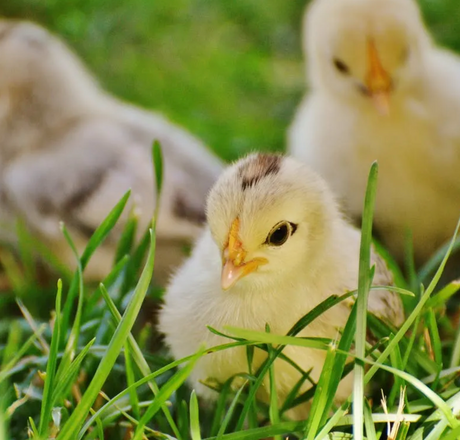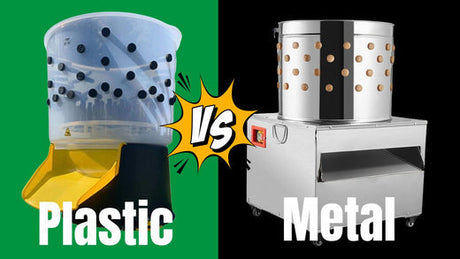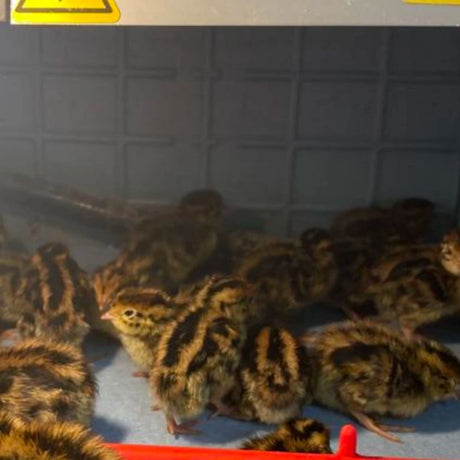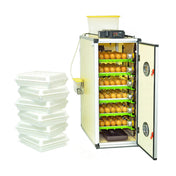Table of Contents
Are you thinking about hatching eggs? Chicken egg hatching process is an exciting and rewarding endeavor. Whether you're hatching eggs from your own flock of birds, adding new blood to your breeding program, or just getting started with poultry, incubating eggs is a rewarding foray into poultry raising.
The suggested guidelines in this article are for incubating chicken eggs using an incubator at home, if you are incubating a different poultry species make sure to adjust the requirements accordingly. For those hatching goose eggs, goose egg incubators provide the ideal temperature and humidity control, ensuring successful hatching and healthy goslings.

Setting Poultry Eggs
Fertile poultry eggs can be sourced from online hatcheries, local breeders, and breeder groups. When you purchase fertile hatching eggs, it is important to be aware that a 100% hatch rate is uncommon. Terry McGleish of Coturnix Corner says, "Too many variables at play on shipped eggs. 100% would be a good hatch rate, but as low as 25% would be acceptable." Only incubate clean eggs. Before incubating your eggs, learn more about how to hatch Chicken Eggs in an Incubator and ensure that your incubator is working properly. The two most important factors in successfully incubating eggs are temperature and humidity.
The optimal temperature for incubating chicken eggs is 100.5 degrees Fahrenheit, a range of 99-102 degrees Fahrenheit is acceptable. Use a second thermometer to ensure the gauge is working correctly. Humidity inside the incubator for days 1-17 should be 50-55 percent. Check the humidity of the incubator daily with a hygrometer and add water as needed. For those looking to hatch turkey eggs efficiently, turkey egg incubators provide precise temperature and humidity control, ensuring optimal hatch rates for healthy poults. Also for consistent and reliable hatching results, consider using smart automatic egg incubators designed to maintain optimal conditions effortlessly. Luckily, Hatching Time incubators all come equipped with the best technology on the market. Temperature control, humidity control, ventilation, and alarms alert you when parameters change. The incubator should only be opened when necessary to avoid causing fluctuations in humidity and temperature. Do not sit your incubator where it will receive direct sunlight.

Turning Eggs
Once eggs are set the incubation process begins. An important part of this process is turning or rotating the eggs to mimic the behavior of a setting hen. Eggs must be turned by hand or with an egg turner to prevent the developing chick from sticking to the shell. Eggs should be placed on their sides or in an egg setter tray, pointy end down. Incubating eggs need to be turned at least three times a day, but not more than five times a day.
When turning eggs manually, mark them with an "X" on one side to keep track of their position. For example, if the "X" is visible then when you turn the egg turn it until the "X" is no longer visible, if the "X" isn't visible, turn the egg until the "X" is visible. Use a pencil or sharpie to lightly mark the eggs. Take care not to crack or cause fractures on the egg shell. Turn your chicken eggs for eighteen days from the day the eggs are set in the incubator. When hatching different breeds, egg baskets come in handy to easily keep the eggs/chicks from getting mixed up.

Candling Eggs
Candling is the process used to check on the progress of developing eggs. Candling is best accomplished by shining a bright light under an egg in a dark room. The light illuminates the inside of the egg allowing you to see the developing chick within. Eggs are candled seven and ten days after setting to remove any eggs that are unfertilized, not developing, or quitters. These eggs will be clear or have a ring of red within the egg. These eggs need to be discarded as they will not hatch.
Developing eggs will have visible blood vessels during candling. To candle eggs, use a candle or an egg candler. Do not candle all the eggs at once, but rather one by one. Do not keep the eggs out of the incubator for more than ten minutes. At eighteen days of incubation, the inside of the egg will be dark as the embryo takes up the majority of the egg at this stage. After candling, return the eggs to the incubator immediately. Remove and discard any eggs that are cracked, leaking, smelly, or not viable when candled.

Post-Hatch Care and Incubator Cleanup
Eggs go into lockdown on day eighteen, no more turning is required, and the humidity of the incubator is raised to 70%. To learn the answer for the most common question how many days to incubate chicken eggs, is that the chicks will start hatching on day twenty-one (21). As tempting as it may be to help the chicks hatch, do not help them hatch! It usually takes five to seven hours for a chick to hatch, but it can take up to twenty-four hours. Leave the chicks in the incubator until the majority of them have hatched. Once they are dry and fluffy, remove the chicks from the incubator and put them in a brooder, browser chick brooder parts.
Your brooder should already be set up and running at least twelve hours prior to the chicks expected hatch date. After placing your chicks in their brooder, dip their beaks in the water so they know where to drink. Don't forget to have chick grit in your chick feed. If you have any unhatched eggs let the incubator run for another one to two days. During this time candle the eggs to determine if the chick is still alive. After two days discard unhatched eggs. Clean your incubator with warm water and bleach, then wipe it down and set it up for the next hatch or store it for next season.
Looking for hatching eggs? Check out the Hatching Time Farm Directory, where you can search by species, delivery method, NPIP status, and much more!
Written by:

Aryeh Wiesel

